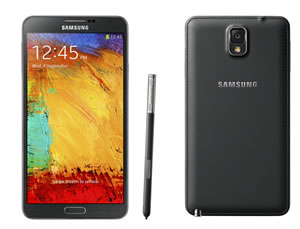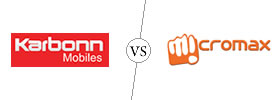Difference between Samsung Galaxy Note 3 and Moto X
Key difference: Samsung Galaxy Note 3 is the latest smartphone by the Samsung Corporation. It was unveiled on September 4, 2013, at the IFA Berlin with the Galaxy Gear, a smart watch that is supposed to work as a companion device for the Galaxy phones. In May 2013, Motorola - a Google Company announced the launch of its flagship phone, the Moto X. The phone was officially available on August 23, 2013.

On September 4, 2013, Samsung announced the launch of its latest smartphone: The Samsung Galaxy Note 3. It was unveiled at the IFA Berlin and will be officially available on September 25, 2013. At the same event, Samsung also announced the launch of the Galaxy Gear, a smart watch that is supposed to work as a companion device for the Galaxy phones. The Gear will initially only be pairable with the Galaxy Note 3, however updates are expected soon that will make the watch compatible to Galaxy S3, S4 and Note 2.
The Gear has a 1.63-inch, 320x320-pixel super AMOLED screen in a metal screen. It can be used to answer calls, control music, etc. An app called the Gear Manager is used to control the settings on the Gear. The Gear also has a 1.9-megapixel embedded camera, which can be used for photos or video recording. The Gear will be launched with 60 available apps, which will grow over time. The Gear will be available in black, grey, beige, rose gold, green and orange.
The Note 3 itself is considered to be bigger, faster, thinner, and lighter than the Note 2. It features a 5.7 inch Super AMOLED display; an internal memory of 32 GB, which is expandable with a micro SD card of up to 64 GB; and 3G of RAM. The phone is available in two variants, which differ mainly in the processor. The LTE model is available with a 2.3 GHz Quad-Core Processor, whereas the 3G variant is available with a 1.9GHz Big-core Quad + a 1.3GHz little-core Quad. The phone also features a 13 MP primary camera, and a 2 MP primary front-facing camera. The Note 3 is also the first phone on the market to feature the new USB 3.0 charger.
In true Samsung fashion, the phone also boasts various features, such as the Air Command, which comes on each time the stylus is extracted. The menu can also be accessed through by hovering the stylus above the display and clicking its built-in button. The stylus can also be paired with various S Pen features, such as Action Memos, Pen Window, S Finder, and Scrapbook. The phone also continues the Multi Window functionality, as seen in Samsung's previous phones.

In May 2013, Motorola, now a Google Company, announced the launch of its flagship phone, the Moto X. The phone was officially available on August 23, 2013. Motorola marketed the phone as the first Motorola smartphone to be created and assembled in the United States. Additionally, the phone is highly modifiable. While, the front panel of the phone is available in black or white, the back panel is customization in up to 18 colors. However, this option is only available in the United States and exclusively to AT&T customers. The option may be expanded to other customers after November 2013, but that remains to be seen. Currently, other customers only have the option of woven black and woven white.
In terms of hardware, the phone features a 4.7 inch AMOLED display with a resolution of 1280 x 720 pixels. Moto X is powered by the Motorola X8 Mobile Computing System which consists of a Qualcomm Snapdragon S4 Pro System-on-chip, a single-core Natural Language Processor and a single-core Contextual Awareness Processor. The Snapdragon SoC itself consists of a dual-core Krait 300 CPU at 1.7Ghz and a quad-core Adreno 320 GPU at 400 MHz.
Moreover, the device has been touted as having Contextual awareness, which includes features such as saying "OK Google Now" to activate Google Now hands-free; activating the camera with flicks of one's wrist, known as 'quick capture'; the clock is displayed automatically when the phone is picked up or taken out of the pocket; the screen regularly turns on for few seconds and shows the time and recent notifications; notifications appear when a finger is placed on the screen and removing the finger returns the phone to the lock screen.
Comparison between Samsung Galaxy Note 3 and Moto X:
The information for the detailed table about the two phones has been taken from the Samsung website, the Motorola website and GSMArena.com.
|
|
Samsung Galaxy Note 3 |
Moto X |
|
Launch Date |
September 25, 2013 |
August 23, 2013 |
|
Company |
Samsung Corporation |
Motorola Mobility, a Google company |
|
Size |
151.2 x 79.2 x 8.3mm |
129.3 mm (5.09 in) x 65.3 mm (2.57 in) x 10.4 mm (0.41 in) |
|
Display |
5.7 inch (144.3mm) Full HD Super AMOLED |
4.7 inches AMOLED capacitive touchscreen |
|
Screen |
1920 x 1080, 16M colors (~386 ppi pixel density) |
720 x 1280 pixels, 16M colors (~312 ppi pixel density) |
|
Protection |
- |
Corning Gorilla Glass |
|
Weight |
168g |
130 g (4.59 oz) |
|
2G Network |
GSM / GPRS / EDGE : 850 / 900 / 1800 / 1900 MHz |
GSM 850 / 900 / 1800 / 1900 CDMA 800 / 1900 |
|
3G Network |
HSPA+ 42Mbps: 850 / 900 / 1900 / 2100 MHz |
HSDPA 850 / 900 / 1900 / 2100 CDMA2000 1xEV-DO HSDPA 850 / 1900 / 2100 |
|
4G Network |
LTE Cat 4 150 /50Mbps: up to 6 different band sets (Dependent on market) |
LTE 700 / 850 / 1700 / 1900 / 2100 LTE 700 MHz Class 13 LTE 1900 |
|
GUI |
TouchWiz UI |
Android Jelly Bean UI |
|
CPU speed |
LTE: 2.3 GHz Quad-Core Processor 3G: 1.9GHz Big-core Quad + 1.3GHz little-core Quad |
Dual-core 1.7 GHz Krait |
|
GPU |
LTE: Adreno 330 |
Adreno 320 |
|
OS |
Android OS, v4.3 (Jelly Bean) |
Android OS, v4.2.2 (Jelly Bean) |
|
Chipset |
Qualcomm Snapdragon 800 |
Qualcomm MSM8960Pro Snapdragon |
|
RAM |
3 GB |
2 GB |
|
SIM Size |
Micro-SIM |
Nano-SIM |
|
Internal Memory |
32 GB |
16/32 GB |
|
Expandable Memory |
Micro SD (Up to 64GB) |
No |
|
Sensors |
Gesture Sensor, Accelerometer, Geo-magnetic, Gyro-sensor, Light Sensor, Proximity Sensor, Barometer Sensor/Temperature & Humidity Sensor, Hall Sensor |
Accelerometer, gyro, proximity, compass, barometer, temperature |
|
Connectivity |
WiFi 802.11 a / b / g / n / ac (HT80), GPS / GLONASS, NFC, Bluetooth v 4.0 (LE), IR LED (Remote Control), MHL 2.0 |
GPRS, EDGE,, Wi-Fi, Wi-Fi Hotspot, Bluetooth 4.0, USB 2.0 |
|
Data |
GPRS, EDGE, Speed, WLAN, Bluetooth, NFC, Infrared port, USB |
GPRS, EDGE, WLAN, Bluetooth, NFC, USB |
|
Speed |
HSDPA, 42 Mbps; HSUPA; LTE, Cat4, 50 Mbps UL, 150 Mbps DL |
HSDPA, 42.2 Mbps; HSUPA, 5.76 Mbps; LTE, Cat3, 50 Mbps UL, 100 Mbps DL / EV-DO Rev. A, up to 3.1 Mbps |
|
WLAN |
WiFi 802.11 a/b/g/n/ac (HT80) |
Wi-Fi 802.11 a/b/g/n/ac, dual-band, DLNA, Wi-Fi hotspot |
|
Bluetooth |
Bluetooth 4.0 (LE) |
Bluetooth v4.0 with A2DP, LE, EDR |
|
USB |
microUSB v3.0 (MHL 2), USB Host |
microUSB v2.0 (MHL), USB Host |
|
Primary Camera |
13 MP, 4128 x 3096 pixels, autofocus, LED flash |
10 MP, autofocus, LED flash |
|
Secondary Camera |
2 MP, 1080p@30fps |
2 MP,1080p |
|
Video |
2160p@30fps, 1080p@60fps (LTE model)/ 1080p@30fps (3G model) |
1080p@30fps, stereo sound rec., HDR |
|
Camera Features |
|
|
|
Sound Enhancement |
Active noise cancellation with dedicated mic |
Active noise cancellation with dedicated mic |
|
Audio supported formats |
Codec, MP3, AAC/AAC+/eAAC+, WMA, FLAC, AMR-NB/WB, Vorbis, WAV |
MP3/AAC+/WAV/WMA player |
|
Video supported formats |
Code, H.264, MPEG-4, H.263, VC-1WMV7, WMV8, Sorenson Spark, MP43, VP8 |
MP4/H.263/H.264/WMV player |
|
Battery Capacity |
Li-ion 3,200 mAh |
Li-Ion 2200 mAh battery |
|
Stand-by |
No official data available |
Up to 576 h |
|
Talktime |
No official data available |
Up to 13 h |
|
Available Colors |
Black, White, Pink |
Black, White (front panel), 18 color options (back panel – AT&T exclusive) – Woven Black, Woven White (other markets) |
|
Messaging |
SMS(threaded view), MMS, Email, Push Mail, IM, RSS |
SMS(threaded view), MMS, Email, Push Email, IM |
|
Browser |
HTML5 |
HTML5 |
|
Radio |
- |
No |
|
GPS |
with A-GPS support and GLONASS |
with A-GPS support and GLONASS |
|
Java |
via Java MIDP emulator |
via Java MIDP emulator |
|
Additional Features |
|
|
Image Courtesy: phandroid.com, motorola.com









Add new comment